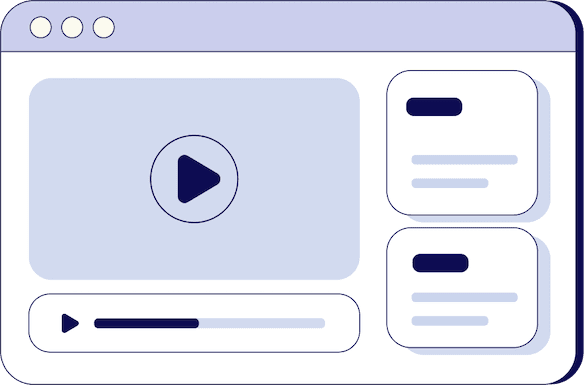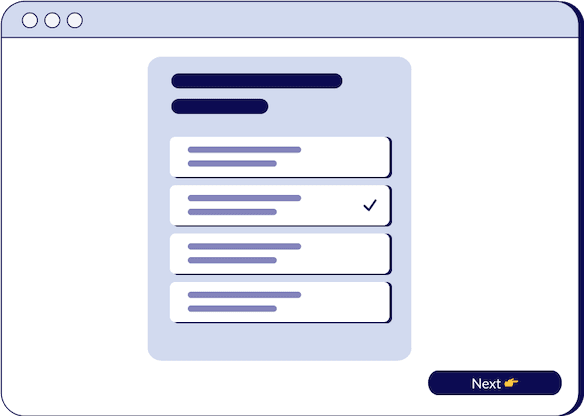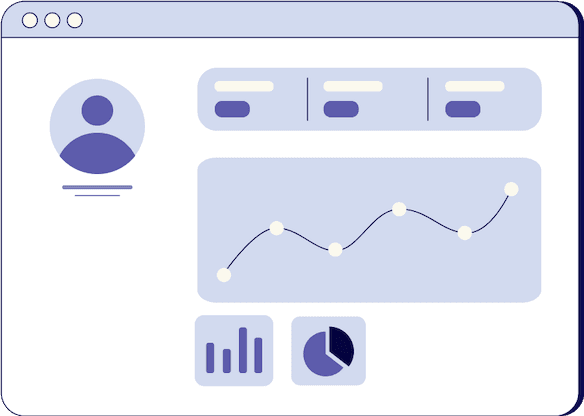
4-Step Process To Master NLP in Sales
Will Barron
Managing Director at Salesman.org

- duration
- 12 min
- Average Score
- 56%
- Stars
- 4
Neuro-Linguistic Programming (NLP) was first coined by Richard Bandler and John Grinder in the book "The Structure of Magic I and II". NLP is a framework for explaining and influencing how people think and behave. Initially, it was based on the idea that humans operate according to some unconscious internal map or playbook, which doesn't always reflect reality. By using language, strategies, and subtle behaviors, NLP aims to influence these internal maps.
NLP's Influence on Sales
Beyond Words: The Subtle TechniquesAny salesperson knows that the right words in a sales pitch can make or break a deal. However, only the best understand that there's more at play than just words. NLP provides a framework to tap into more subtle techniques that can nudge buyers towards making a "yes" decision.
Understanding the Core Concepts of NLP
NLP was designed to identify the patterns of thoughts and behaviors of successful individuals. The goal is to replicate these successful patterns in others, helping them achieve similar success. NLP has been applied in various fields, from improving work productivity and career progression to treating phobias, depression, anxiety, and PTSD. However, its clinical effectiveness is still debated.
The Four-Step NLP Framework for Sales
1. Emotional AnchoringEmotional anchoring involves introducing a specific emotional response that buyers have had in the past. For instance, linking a positive emotional experience with your product can significantly increase the chances of a purchase. This technique can be particularly effective when selling products that improve productivity, helping buyers recall their biggest career successes and linking those feelings to your product.
2. Using Specific Selling PhrasesKnown as "magic words" in NLP, these phrases can prime buyers to feel specific emotions. Words like "believe," "change," "energize," and "healthy" can elicit positive feelings, while words like "urgent," "easy," "simple," and "limited time" can create urgency. Incorporating these words into your pitch can help break through sales objections and influence buyer behavior.
3. Body Language and Communication MirroringMirroring body language puts buyers at ease and breaks down emotional barriers. This technique involves subtly mimicking the buyer’s posture, gestures, and even their phrases and cadence. Successful mirroring requires maintaining great eye contact, observing unique hand gestures, and matching the buyer’s posture. This can be effective both in person and over video calls.
4. Mastering Modeling (Swish Pattern)The swish pattern helps buyers recognize and overcome their biases. By showcasing the positive outcomes of changing their preconceived notions, salespeople can influence buyers to adopt new, productive behaviors. For example, if a buyer is resistant to new technology, using testimonials and reviews to challenge their old-school mentality can help shift their perspective.
Applying NLP in B2B Sales
Clinical vs. Sales EnvironmentWhile clinical evidence for NLP's effectiveness is scarce, its principles can still be valuable in the B2B sales context. Think of NLP as a set of communication tools rather than a clinical practice.
Practical Tips for Salespeople
- Leverage Emotional Anchors
- Link positive past experiences to your product to evoke favorable responses. For example, if your product improves workplace productivity, anchor it to the buyer’s memories of their greatest professional achievements.
- Use Magic Words
- Incorporate specific selling phrases into your conversation to elicit desired emotions. Words like "believe" and "energize" can evoke positive feelings, while "urgent" and "simple" can create a sense of urgency.
- Mirror Body Language
- Subtly mimic your buyer’s behavior to build rapport and trust. Pay attention to their posture, gestures, and speech patterns, and reflect these in your own behavior.
- Challenge Biases with the Swish Pattern
- Use testimonials and reviews to shift the buyer’s self-image towards embracing new methods and technologies. Highlight the success stories of others who have adopted your product to challenge the buyer’s preconceived notions.
Advanced Techniques in NLP for Sales
The Role of Intonation and DemeanorYour intonation and general demeanor play a crucial role in NLP. The way you present yourself can influence whether a buyer trusts you or perceives you as a typical salesperson. Using a calm, confident tone and a friendly demeanor can help build trust and make your pitch more effective.
Subtle Communication CuesInvisible cues like body language, eye contact, and tone of voice can significantly impact your sales outcomes. Buyers often pick up on these subtle signals, which can influence their decision to trust you and, ultimately, make a purchase.
Building Trust Through NLP
Trust is a major indicator of success in sales. NLP can help identify what might be causing buyers to distrust you and provide strategies to overcome these barriers. By understanding and applying NLP principles, you can improve your communication and build stronger relationships with your buyers.
Overcoming Sales Challenges with NLP
Addressing ObjectionsNLP techniques can help you address and overcome sales objections. By understanding the buyer’s internal playbook, you can tailor your responses to their specific concerns, making them more likely to be receptive to your pitch.
Enhancing Self-AwarenessNLP is not just about influencing others; it’s also about improving yourself. By becoming more aware of your own communication patterns and biases, you can become a more effective salesperson. Use NLP to refine your own internal playbook and enhance your sales strategies.
By understanding and applying Neuro-Linguistic Programming (NLP) techniques, salespeople can improve their effectiveness and build stronger relationships with their buyers. NLP provides tools to subtly influence buyer behavior and overcome objections, ultimately leading to more successful sales outcomes.
Remember, the key is subtlety and understanding the underlying psychology of your buyers. Whether you’re using emotional anchoring, specific selling phrases, body language mirroring, or the swish pattern, NLP can be a powerful tool in your sales arsenal.
FAQs
What is NLP?NLP, or Neuro-Linguistic Programming, is a framework for understanding and influencing human thought and behavior.
How can NLP be applied in sales?NLP can be applied through techniques like emotional anchoring, specific selling phrases, body language mirroring, and the swish pattern to influence buyer behavior and decision-making.
Is there clinical evidence supporting NLP?While clinical evidence for NLP is limited, its principles can still be valuable in the B2B sales context.
How Triple Session works
Training, Testing, & Feedback
Triple Session's proven formula accelerates your sales performance through consistent, organized practice, backed by measurable results.

Bite-Sized Knowledge
Our expert-led video sessions simplify complex sales concepts into easy-to-digest 5-15 minute videos for better retention.

Test Your Understanding
After each session, there will be a quiz to test your understanding and help you improve on any areas that need more attention.

Evaluate and Grow
Get progress snapshots after each quiz to track your improvements and achieve your sales mastery goals.